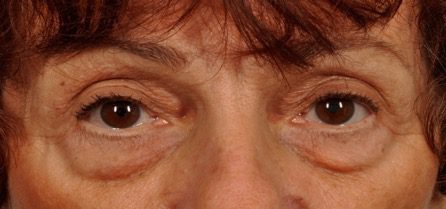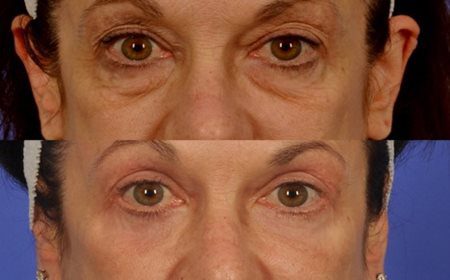
“I have dark circles under my eyes. How do I fix them? I’ve been told there’s nothing I can do about it.”
It’s one of the most common complaints that brings people to my office (and one of the most common questions asked of me at social events over a glass of wine once someone knows I’m a facial cosmetic surgeon).

Often what they’ve been told is not true, and I try to answer the question with a little education.
First, it helps to know what dark circles are. And this is not universally agreed upon, but this is my take on it.
Some people have deposits of pigment in the skin right in that area. Because of its 3 dimensional shape, that part of the lower eyelid can be in direct view of the sun’s rays and may tan more quickly or develop skin damage that causes increased pigmentation.
But this is rare. Those patients do well with bleaching agents, or alternatively with light based treatments that can deal with and fade pigment.
More often than not, dark circles are not that. Here’s what I think they are:
Look at the veins on the back of your hand. You can see the veins bulge, and they seem blue in color, darker than the rest of your skin.
We know they carry red blood. And when you see them at the time of surgery, let me assure you that they aren’t blue, they are very deeply red.
Anatomically, the skin of the eyelid is the thinnest in the body. And the thinner the skin is, the more that it can allow the transmission of the color and shape of the tissue underlying the surface (like the back of your hand).
It just so happens that the eyelid skin in this location is thinnest, and in this location the muscle underlying the skin in this location is more red. It’s partly a blood flow issue. You can prove this by rubbing your eye. After the red of your skin goes away, you will notice, that for a time, the dark circles are worse. Blood flow to the area has been stimulated, and like veins that bulge with exercise, the darkness under the eyelids also gets worse.
So, we can start with treating the causes of increased blood flow to the area, such as allergies or sinus problems. Oral or topical antihistamines can generate improvement. We can also try minimally invasive, in-office procedures, such as fillers, to help thicken the skin in the area.
But in my view, the best invasive treatment for dark circles is laser resurfacing. It thickens the skin by inducing the formation of collagen and lessens the signs of the underlying problem.

Here’s a link to some of the other successes we’ve had in Laser Skin Resurfacing.
So, when I get this far at the event where I’m enjoying a glass of wine, I’ve usually shared all of the above with at least four people. Nearly all want to do something about it. Maybe I should go out more socially—just to spread the word that something can be done!

